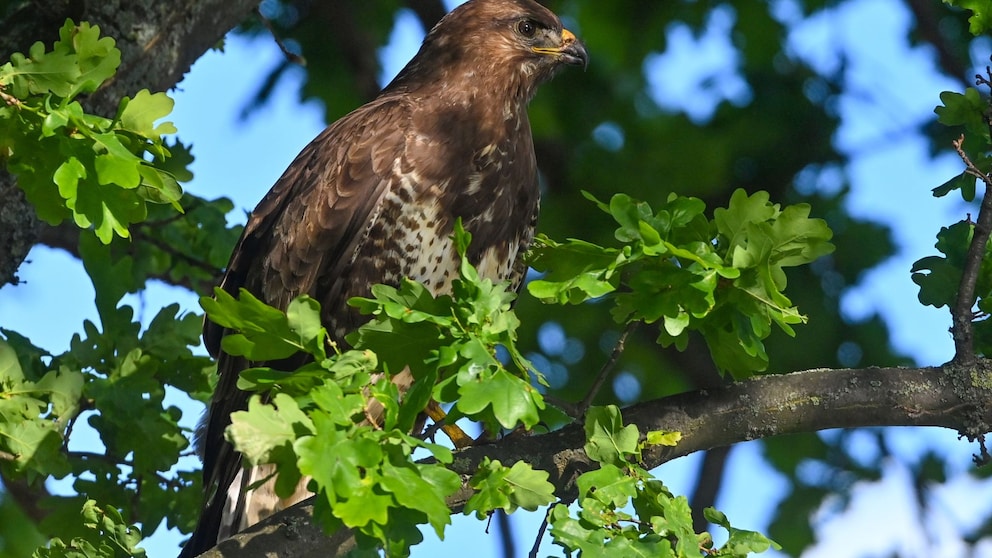
June 20, 2024, 8:51 am | Read time: 3 minutes
Buzzards are birds that spend most of their time in wooded areas and open landscapes, and often have little contact with humans. However, there is one time of the year when they can be quite dangerous to joggers.
The common buzzard is a medium-sized bird of prey that used to be very common in Germany. Like many other species, it is now losing its habitat and has become endangered. As a result, it is becoming increasingly common for them to be found in areas bordering towns and cities. But why are buzzard attacks against joggers and cyclists becoming more and more common in these areas at this time of year?
Buzzards are very defensive in June and July
From the beginning to the middle of April, the female buzzard lays two to three eggs. These are incubated until mid-May. The chicks then hatch and are cared for by the adult birds for around six to eight weeks. Particular care should be taken at this time if you are practicing outdoor sports. This is especially important near forests or on the outskirts of towns.
However, buzzards do not experience negative emotions when they see people engaging in sporting activities. These native birds of prey, like many others – such as magpies and crows, are particularly defensive when they have offspring in their nest. When it comes to their chicks, buzzards react sensitively to joggers or cyclists. This is because they may perceive the fast movements as dangerous and then attack.
The reason is that, because they are looking after their newly hatched offspring, buzzard parents occasionally react sensitively to fast movements. They then attack the perceived danger to their young – sometimes even with their beaks and claws. The German Nature and Biodiversity Conservation Union (NABU) therefore recommends that joggers, cyclists and even pedestrians move carefully and slowly. This is especially important at forest edges or near small woodland copses.

Shoebill from East Africa This giant bird eats crocodiles

Common Prejudice So Much for Monogamy! “Divorces” Are More Common Among Penguins Than Humans

Stress and unclear loss rates Why animal welfare activists criticize today’s racing pigeon breeding
What to do in the event of an attack
In the event of an attack, keep calm and move slowly away from the buzzard and its nest. To protect your head, you can use your hands or a branch as a shield. In most cases, so-called mock attacks occur, in which the bird turns away shortly before contact or flies just above you.
“The risk of an attack only exists during breeding and also varies from pair to pair,” explains Nabu expert Christian Chwallek. The critical phase in which the adult birds are most likely to aggressively defend their brood begins at the beginning of June and extends into July. “As soon as the young are independent, peace returns for the parents.”
With material from dpa

